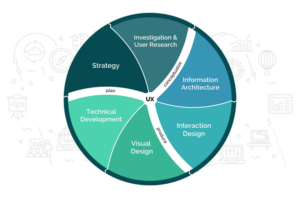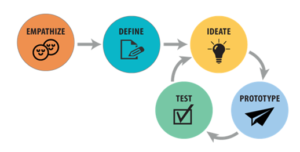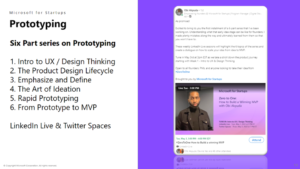This new, fresh idea that you’ve been sitting on for the past few months is eating you alive. Perhaps it started with a problem you’ve always had, like a productivity issue at work, or a product that demands a better consumer experience. Maybe you’re working on a solution to a problem that most people haven’t recognized. Whatever the case may be, you feel passionate about it, you feel as that you are uniquely qualified to solve this issue and you’re going for it.
Once you’ve validated your idea with everyone that matters (a.k.a. your grandma and your dog), ironed out some of the kinks and worked on your first 10-second pitch, you need to bring your idea to life. I’ve seen many founders, including myself, who had the right intentions when building a product, but didn’t have the structure or framework in place. Not to worry, I’ve failed enough times along the way so you all won’t have to. Let’s get into it.
What is UX and why should I even care about it?
When it comes to building and delivering digital experiences my rule of thumb is, “Build with the end user in mind.”
At its core, the basic concept of UX is ‘How a Product Feels’. It’s about understanding the various needs of your users and how to meet them. UX creates a friendly environment for users to fulfill their needs simply, and without any fuss. Good UX design demonstrates a complete understanding of the user.

UX stands for User Experience and before you look to take your idea to the next level, you should start with the why, the what and, most importantly, the how to create products and experiences that drive a solution to your end users.
I hope that didn’t go over your head. If it did, not to worry because we will be referring back to the previous statement in later posts so store that in the back of your mind for now. On to one of my personal favorite topics, design thinking!
What is design thinking?
Design thinking is an ideology and process that allows you solve complex problems with both a solution-oriented, and an action-oriented approach.
You’re essentially taking the mindset of a designer and applying it to your approach to solve a given problem.
The five phases of design thinking
Design thinking has five distinct phases of execution:
- Empathize
- Define
- Ideate
- Prototype
- Test

Over the next few weeks, we’ll dive into each phase of the process. This diagram shows you don’t necessarily have to do this in a particular order, mainly because the ideology and concept behind design thinking is iterative so even after you build your project, your work isn’t done.
The best outcomes and solutions come from being able to find the perfect balance between people and process. Moving forward, UX and design thinking will be your foundation as you look to iterate through the idea phase.
What’s next?
Now that you’ve learned some of the principles of UX and how it relates to building product and driving solutions, it’s time to start putting them into action.
Next week we’ll dive into the product design lifecycle and in that post, I’ll highlight and introduce a five-step process that will lead you, your product, and your team in the right direction as you look to take your idea to the next level.
Hope this was helpful in anyway as you look to start thinking about building the next killer product or service. To help drive the dialogue even more, join me every Tuesday, on LinkedIn Live at 3pm EST and on Thursday on Twitter Spaces at 7pm EST, to ask me any questions or share anything you may have taken away from the blog post!

For more tips on prototyping and tools for bringing your product to market, sign up today for Microsoft for Startups Founders Hub.






